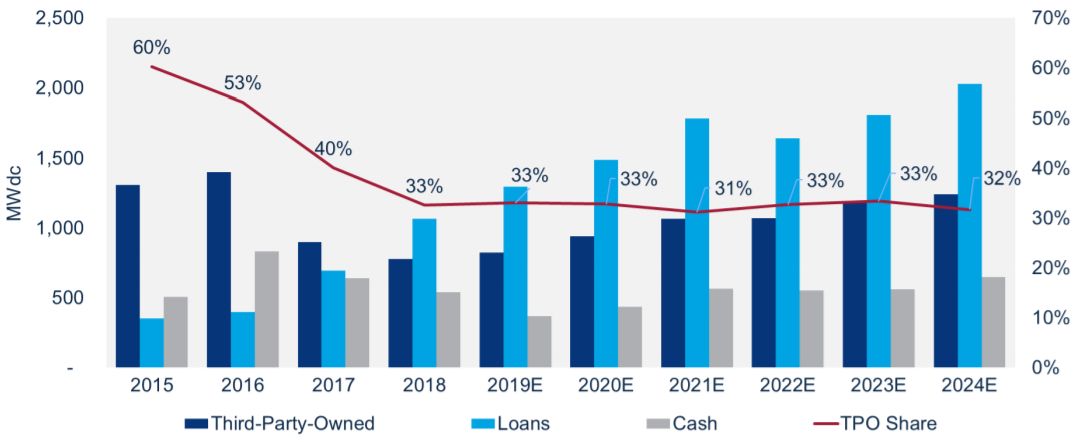

Wood Mackenzie’s Michelle Davis looks at how Sunnova could thrive after what would be the first residential solar IPO in years.
On June 27, 2019, Sunnova submitted a pre-initial public offering prospectus to the U.S. Securities and Exchange Commission. It would be the first residential solar company to go public in the U.S. since 2015.
Other major residential solar companies — Sunrun, Vivint and Tesla — all went public between 2012 and 2015, when the residential solar market was growing at a rate of roughly 60 percent every year. But today’s market context is much different. Sunnova will be going public as residential solar growth moderates, market penetration intensifies customer-acquisition challenges, and customers turn increasingly toward direct ownership of their solar systems.
In a new Wood Mackenzie Power & Renewables report, we outline three ways that Sunnova can thrive after its IPO. The high-level takeaways follow.
First, Sunnova will need to become more geographically diverse by expanding its base of installer partners.
Sunnova’s installations are currently concentrated in New Jersey (29 percent), California (26 percent) and Puerto Rico (14 percent). While Sunnova points to national residential solar market penetration of less than 3 percent as justification for its future growth prospects, Wood Mackenzie estimates that current market penetration is over 5 percent in New Jersey and over 15 percent in California.
Both markets are expected to see single-digit-percentage compound annual growth rates from 2019 to 2024, compared to multiple emerging state markets with CAGRs north of 15 percent. And Sunnova’s business is not just concentrated geographically; 52 percent of Sunnova’s 2018 installations came from one installer, Trinity Solar, which is active mostly in New Jersey and Massachusetts.
Second, Sunnova will need to better manage its operating costs to achieve profitability.
Sunnova incurred operating losses in 2017, 2018 and the first quarter of 2019. At the same time, the other dominant publicly owned residential solar financiers — Sunrun and Vivint — have had much more positive financial success.
Sunrun has become the top residential solar financier while achieving positive structural cash flow and positive earnings per share (EPS) for its investors. Vivint hasn’t achieved consistently positive EPS for shareholders, but the company’s gross margins and overall cash position have improved markedly since the company changed its incentive structure to reward more profitable sales.
Again, Sunnova’s business model should be an advantage here — unlike Sunrun or Vivint, which have substantial overhead from their installation businesses, Sunnova has much less overhead and more flexibility.
But Sunnova has yet to achieve profitability, because, as it states in its pre-IPO filing, the company has continued to invest in the business to fund growth. The filing also points out that the company’s operational expenses are expected to increase as it makes significant investments in operational expansion and internal infrastructure in advance of the IPO.
To be fair, funding growth at the expense of profitability is not uncommon in the solar industry. And Sunnova’s financials have been improving — 2018 brought revenue growth and a lower net loss. As Sunnova moves forward, the company will need to continue improving this financial picture enough to offset increased operating expenses and investments.
Finally, Sunnova will need to focus on the solar loan business.
U.S. Residential Solar Forecast by Financing Type

Source: Sunnova’s IPO: Going Public in a Slower Residential Solar Market
Loans became the industry’s most dominant form of financing in 2018, and Sunnova is well positioned to serve this market, offering power-purchase agreements, leases and loan options to residential solar customers. While third-party ownership options are expected to make up a consistent one-third of the residential solar market in the coming years, loans are expected to grow to over 50 percent of the market.
Additionally, we expect smaller, local installers to experience double-digit growth in the next few years, with only 15 to 18 percent of their business coming from third-party ownership options. To take advantage of this growth, Sunnova will need to grow the loan segment of its business profitably, as loans currently make up less than 25 percent of its business.













